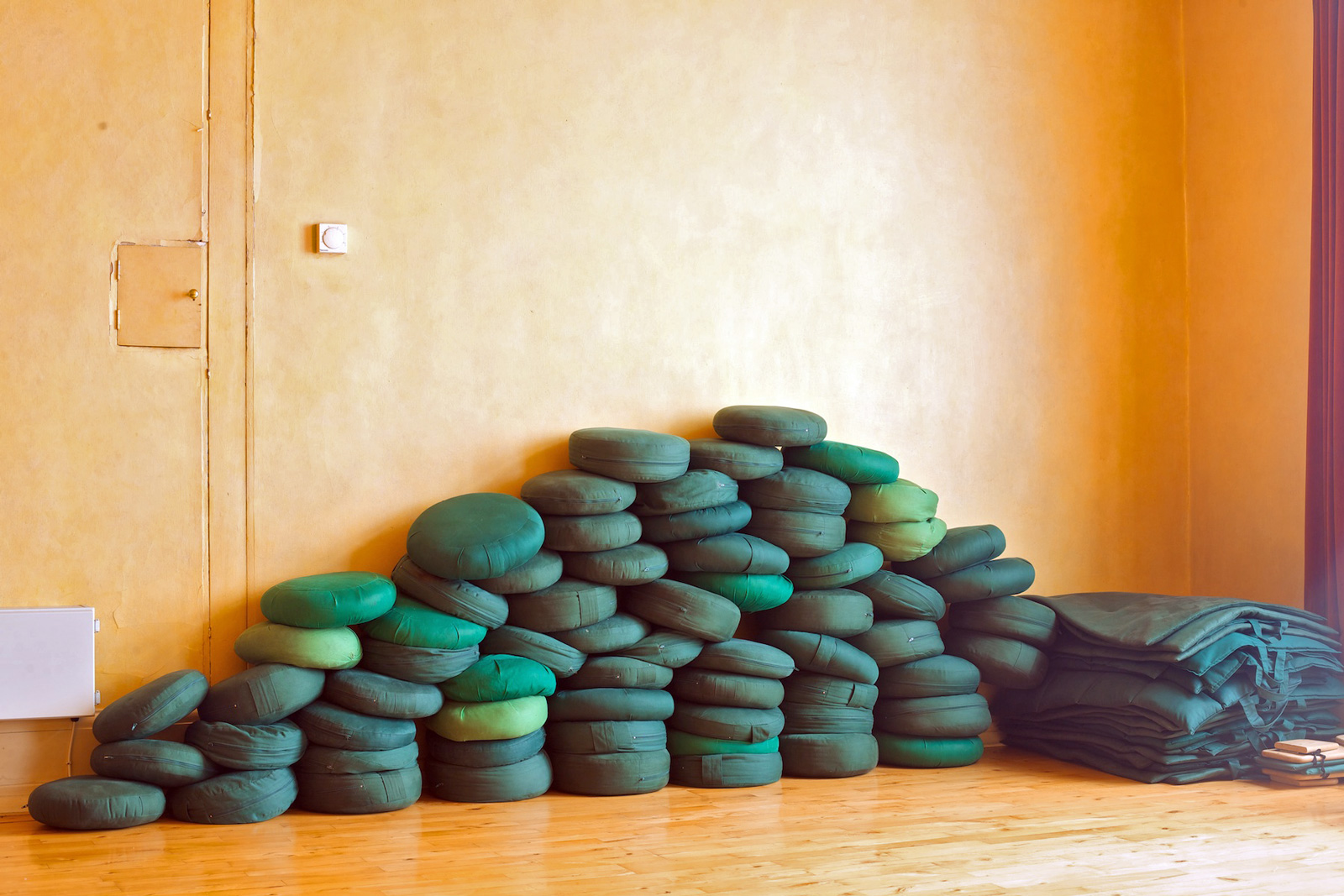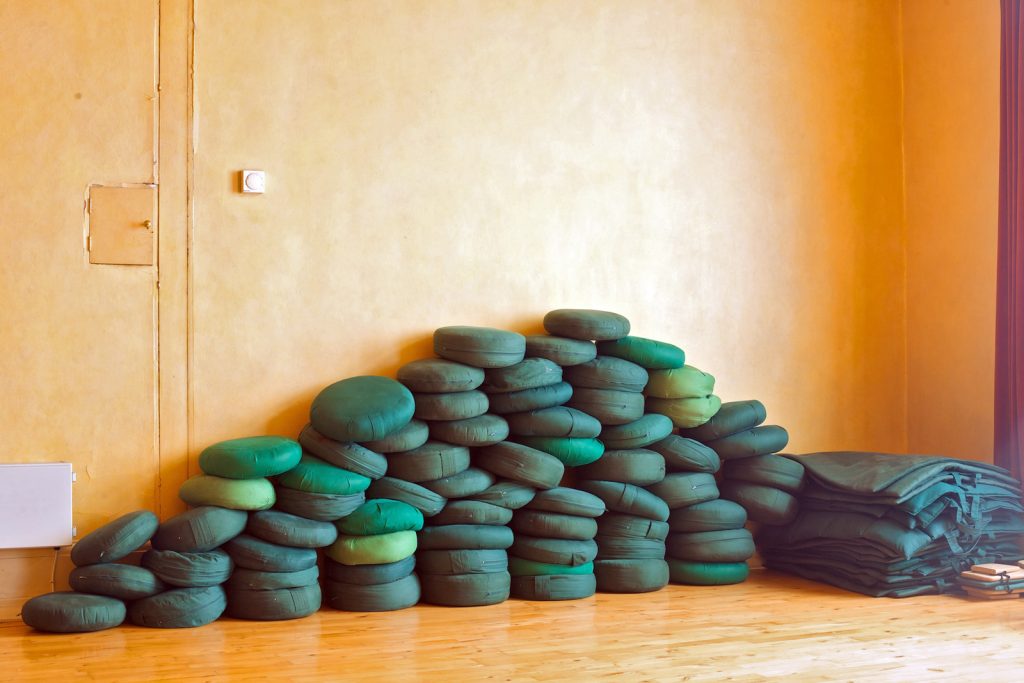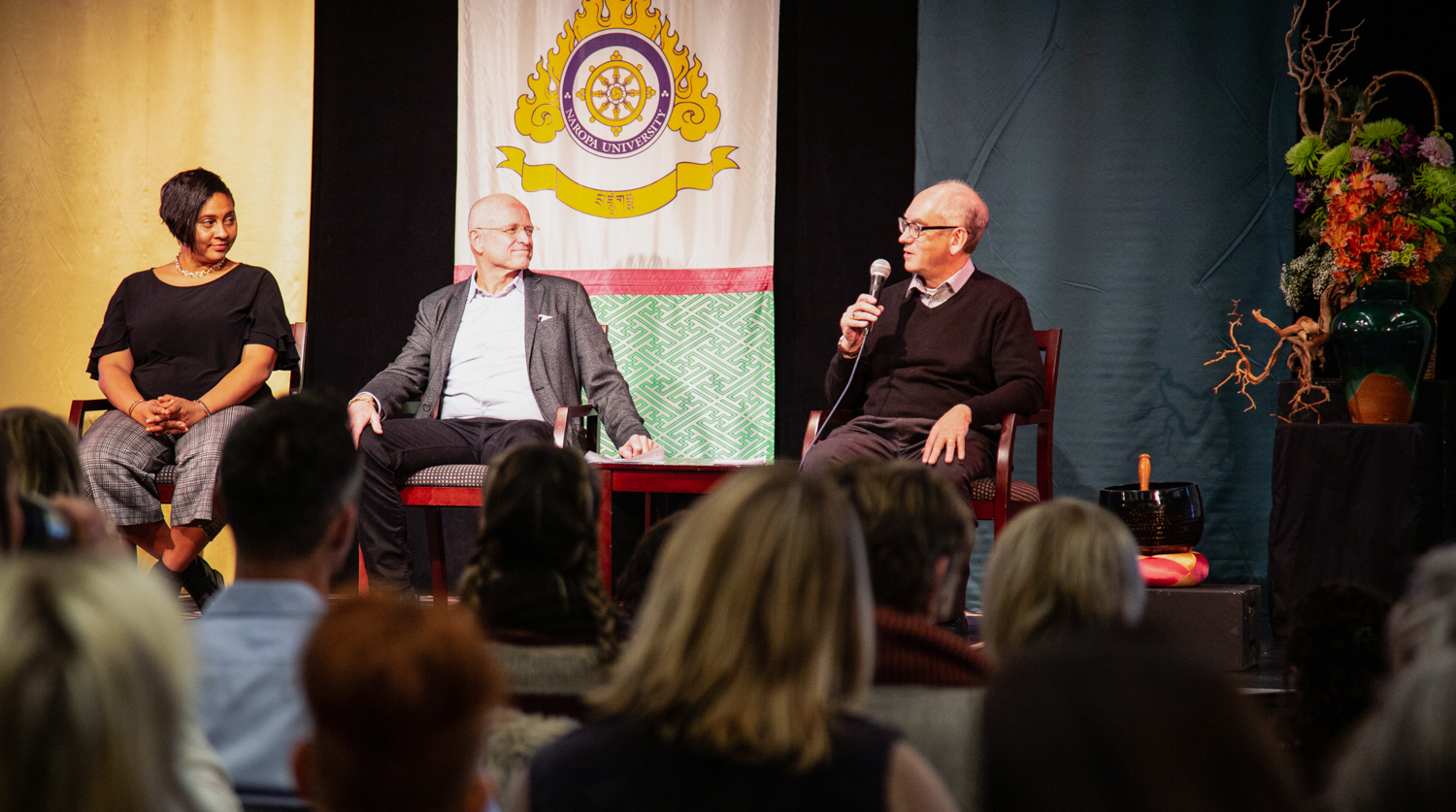Tips for the Procrastinator Practitioner
How to deal with the issues that may arise as we move toward the cushion The post Tips for the Procrastinator Practitioner appeared first on Tricycle: The Buddhist Review.

Meditation Meditation Month 2023
How to deal with the issues that may arise as we move toward the cushion
By Lama Palden Drolma Jan 27, 2023 Photo by Thomas Riggs | https://flic.kr/p/aDBf9W
Photo by Thomas Riggs | https://flic.kr/p/aDBf9WResistance to meditating is familiar to all meditators. This is one of the main obstacles to practice. Usually, it manifests most strongly when we are moving toward the cushion. Suddenly, I may realize that I have forgotten to take out the trash. It’s Thursday and the garbage must go out. I decide to do that first, and while taking out the trash, I notice that the garden is really dry, and it is supposed to be a hot day! I try to turn the water on, but I can’t remember how to override the automatic irrigation system. So I place a call to the irrigation expert, and so on, until pretty soon the 45 minutes I had set aside for meditation are gone. I console myself that I can meditate tomorrow. Of course, some chores are important and must be taken care of, but we need to keep our meditation time nonnegotiable.
Avoiding or resisting spiritual practice arises for many reasons, but there are common threads. We might feel intimidated by the idea of meditation, thinking, My mind is too busy; I will never be able to do this. One part of us might be determined to meditate, while another part may feel: No way, I might lose my incentive if I simply let go and sit. If I’m meditating, I’m not getting anything done. Or we might wonder, Is it really okay to take time for myself? These types of thoughts are often semiconscious. Many times we don’t even know why a part of us doesn’t want to meditate. Underneath these thoughts and feelings is often fear of some kind. Usually people need to exert extra willpower in order to just start meditating. One lama I know says, “You might as well just put out two cushions for your meditation sessions—one for you and one for your resistance. It will accompany you a lot of the time.” That is, it’s important to acknowledge any resistance: Give it some space, and move on with the meditation.
As our meditation becomes more of a daily habit, new patterns form. If we treat our daily meditation as non-negotiable, like brushing our teeth, this can help—the same way a child might resist going to school until she realizes school is unavoidable, and so she settles down and accepts going every day. Meditating with others once a week or more is also helpful. Somehow, if we have a schedule to meditate with others, the ego often relaxes into the program. In a group, the combined intention of the meditators supports each individual to do it. Being accountable to our group, even if we only meet with them once a week, can help sustain our commitment to meditate.
Related: Why Can’t I Get to the Cushion?
Another option is to take some time off the cushion to inquire into the resistance. Sit quietly and ask yourself, What is coming up for me? Without trying to analyze it, simply listen carefully to what answer pops up. Keep questioning. Ask yourself, Tell me more. Don’t reject any response. Just listen and keep inquiring. Responses that arise from the subconscious often don’t make sense initially, but in my experience, if we keep following the threads without judgment, it all eventually becomes clear. An important point is to meet yourself with kindness, be present with your human self, just like you would be patient and kind with a small child you care about. Criticizing yourself simply adds to the difficulty.
We may think, These instructions are too nebulous, too abstract, and besides, I don’t know how to let go! The instructions are abstract because they are trying to point to something that we need to discover for ourselves. Letting go is a skill that we need to develop. First, we can catch the times when we let go naturally, like when we drop onto the couch after a hard day at the office, when we reach our hiking destination and take a break, or when we lounge on our towel at the beach. If we consciously stay present during these experiences, we can see that we do know how to let go, but we need to cultivate this ability so that we can employ it anytime.
Another issue that often arises more specifically with this step is that the ego can feel afraid of disintegrating or dissolving. The ego has worked hard since early childhood to create a strategic operating structure. It can feel threatening to the ego to engage in spiritual practice. If we treat ourselves with kindness, it’s easier for the ego to feel comfortable and learn to relax with the process. Nothing bad is going to happen! We are not going to suddenly lose ourselves. or dissolve into nothingness. The ego eventually learns that it doesn’t have to be in charge all the time. It learns that it’s nice to have a break!
Related: Hang On to Your Ego
Trying to keep everything in its own compartment is another issue in our spiritual work that can come up. For example, we might have our spiritual work in its own box that doesn’t integrate with the rest of our life. Many times, clients have described to me a father who was abusive at home to his wife and children but who acted like a model citizen out in the world. People at their church and in the larger community thought he was wonderful. In different ways, we may also keep different parts of ourselves compartmentalized, so that we show a different face at church, at work, in the community, and at home. Resting in openness comes right up against this hypocrisy and compartmentalization. The ego is trying to do what’s best for us, but the ego lacks essential information. It formulated its strategies at a young age. The early experiences we have gone through develop our core beliefs, and then we operate on that basis. We need to be willing to bring awareness to ourselves, inquiring deeply into our operating system and what is underneath it. Over time we see our core beliefs, and when we see and understand their erroneous nature, we can release them. This is a process that takes time and commitment.
As we become more familiar with meditation, we can drop into a less triggered, less reactive, more skillful way of being whenever we are upset. Our activity can become more potent through openness, unbiased intelligence, and love. We can see new possibilities. As we train on the cushion, our mind gets used to new ways of perceiving, new ways of being, and an increased presence. As we integrate our meditation into daily life, it increasingly manifests in our moment-to-moment flow of experience and is carried into the whole of our lives. We act with more love, compassion, and wisdom.
♦
Excerpted from the book Love on Every Breath. Copyright © 2019 by Lama Palden Drolma. Printed with permission from New World Library — www.newworldlibrary.com.
[This article was first published in 2019]
![]()
Thank you for subscribing to Tricycle! As a nonprofit, we depend on readers like you to keep Buddhist teachings and practices widely available.

 Koichiko
Koichiko 
































